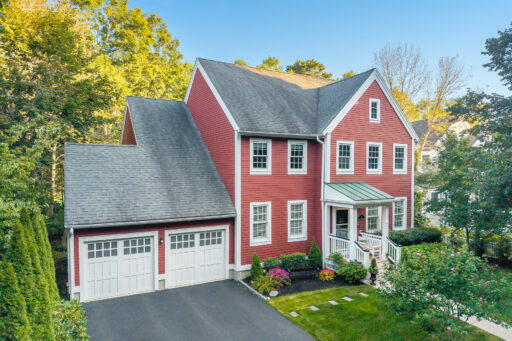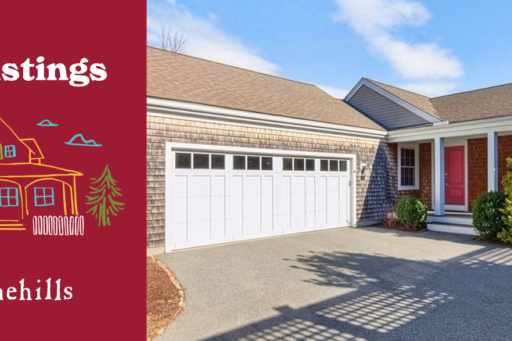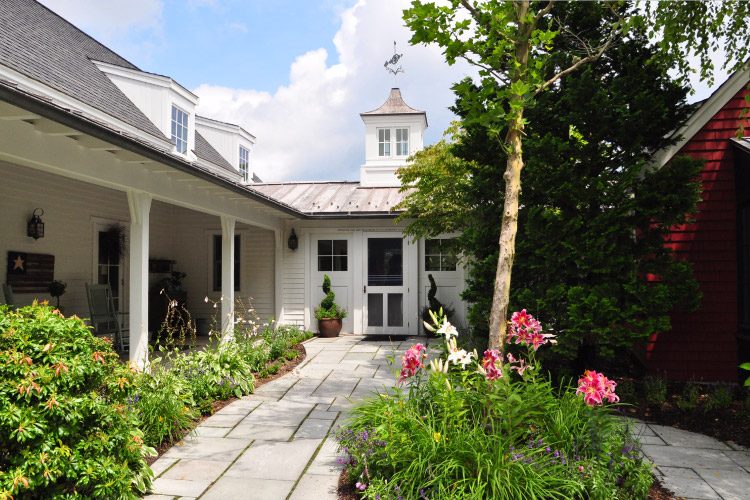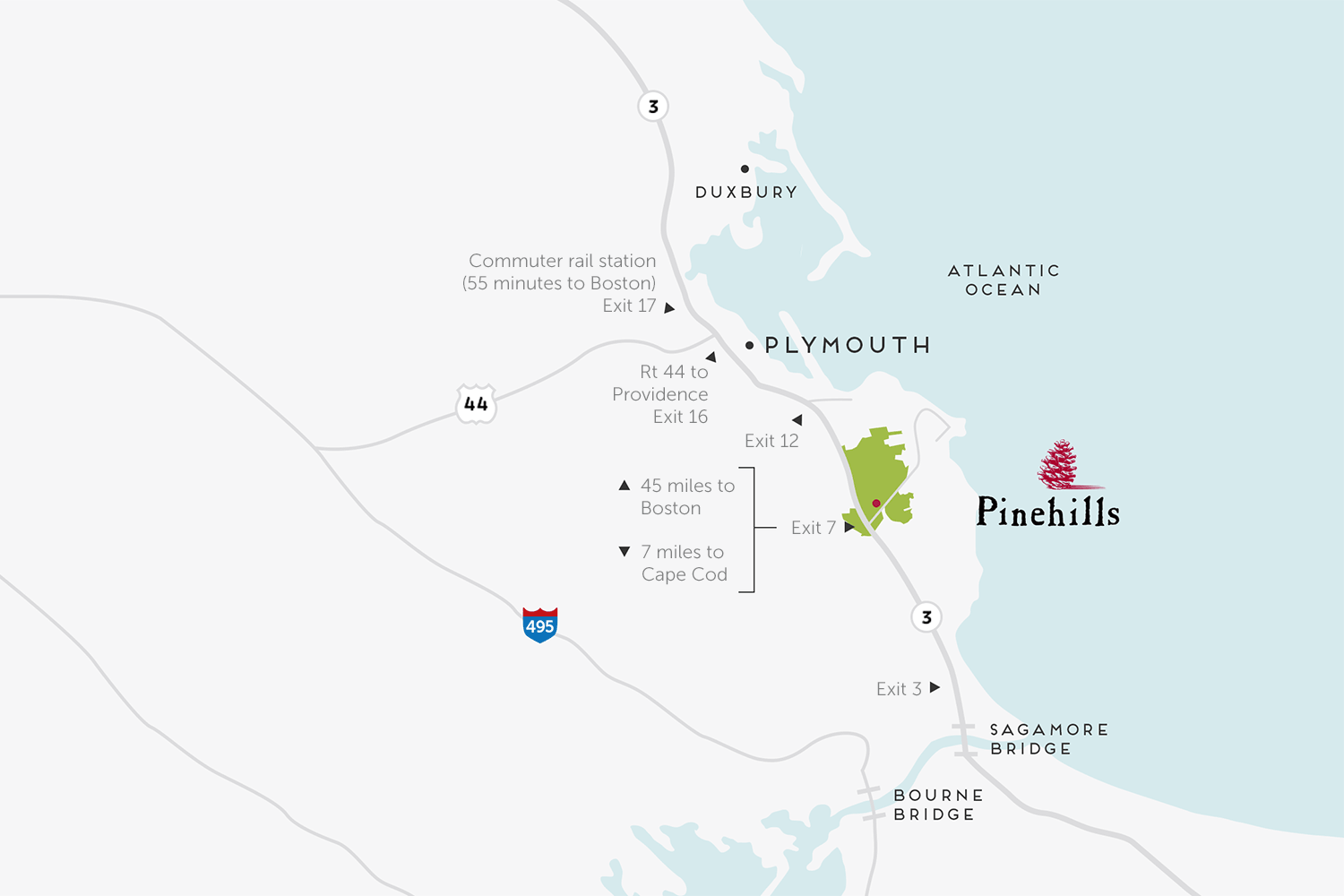New England Condos LEED the Way

The Pinehills in Plymouth, Massachusetts, is comprised of 3,000 condominiums, custom homes, townhomes, cottage homes and luxury rental apartments on 3,000 acres of land. It might sound like that’s a lot of building that can wreak havoc on a community’s resources and the environment, but it’s far from it.
On the contrary, The Pinehills is a low-impact community that preserves open space, balances water use, recycles and reuses wastewater, and has been deemed a “low impact development’ case study by the Commonwealth of Massachusetts Department of Environmental Affairs. In addition, its successful water treatment facility hosts tours that are often sold out.
It’s just one example of the steps that developers and owners of HOAs and condo communities are implementing to create housing that’s more eco-friendly, energy efficient and more likely to create a positive return on investment than ever before.
“There’s a huge trend in residential green building,” says Suzanne Abbott, operations manager of the U.S. Green Building Council’s Massachusetts Chapter. “There aren’t as many mainstream residential Leadership in Energy and Environmental Design
(LEED) houses going up, but there is more of a market for luxury homes that are LEED and energy efficient. Lower income housing is also taking advantage of tax incentives to become more energy efficient. It’s hard to find a new construction condo that doesn’t have any sustainable building aspects to it.”
Leadership in Energy and Environmental Design (LEED) is a nationally-recognized benchmark for the design, construction, and operation of high performance buildings. Boston’s Department of Neighborhood Development (DND) has chosen LEED Silver as the foundation for the city’s new affordable housing design standard. The LEED system promotes a whole-building approach to sustainability by measuring performance in five key areas: sustainable sites, water conservation, energy and atmosphere, materials and resources, and indoor environmental quality.
Massachusetts is a prime example of green leadership. Its Stretch Appendix to its standard Building Energy Code now requires developers to design buildings so as to reduce energy use by a given 20 percent below base code, rather than being required to install specific efficiency measures. Developers have the flexibility to choose which cost- effective solutions they are going to use.
Identifying Ways to Save
The Renew Boston program, through the Mayor’s Office of Environmental and Energy Services, partnered with the DND to make available $900,000 for energy retrofit of affordable housing developments in an effort to improve the energy performance of low-income multifamily buildings. Websites such as MassSave.org post other financial incentives, such as Multi-Family Energy Assessments that identify cost-effective energy efficiency improvement or replacement opportunities at facilities with five or more dwelling units. They focus on the facility’s envelope, lighting and mechanical systems and assess any potential savings.
“There are several multifamily initiatives sponsored by utility companies, especially in Massachusetts,” says Vincent Graziano, president of RISE Engineering in Cranston, Rhode Island. “The incentives are pretty generous and over the last three years, the program has simplified the process for associations and multifamily buildings to participate in energy efficient programs. As a result, multifamily properties can have high efficiency lighting installed in units and common areas.”
Graziano also says there are gas and energy efficiency incentives as well. “Many are at little or no cost,” he says. “The problem is getting as many parties on board as possible to make the project work.”
In Boston, several buildings have garnered attention for their green measures, including First and First Townhomes in South Boston, a 22-unit townhouse condominium designed by Boston architect Utile, Inc (utiledesign.com) that is Silver LEED certified. The luxury Clarendon Boston condominiums achieved LEED Silver certified status in their 33-story newly-constructed building, and the 140-unit Macallen Building was retrofitted with energy-efficient and water-saving measures that allowed it to achieve the Leadership in Energy and Environmental (LEED) Gold certification.
“They save 600,000 gallons of water annually and use 30% less electricity than conventional buildings,” says Abbott. “They have a heat recovery ventilation system, water source heat pumps and no potable water irrigation, no water to irrigate the systems that come out of the supply.”
A heat recovery ventilator is a specialized ventilation system, also known as an air-to-air heat exchanger that pushes stale air out of the house and pulls fresh air in. As it’s doing so, it extracts heat or cold from the air it’s expelling. It saves a tremendous amount of energy, up to 80 percent of the temperature that would’ve been lost. The cost of these systems is low so the return on investment is quick.
Challenges Remain
But even at a time when ‘going green’ seems to be the right thing to do, it’s not without its challenges. The steps that developers take to implement green aspects to their properties depend on funding, community interest, feasibility, and other factors. For example, Tony Green, founder of The Pinehills, says that there were 200 public meetings over a year-and-a-half before any ground was broken in Plymouth.
“It was hard from a permit point of view,” he says. “We got past it because Plymouth liked what we were doing, but that’s not the norm. Residents were worried about traffic, water quality, historical and archeological resources, vegetation, wildlife and flatlands and we addressed all of those issues.
“However, we are more educated, but properties are not going for LEED home credentials as much. There are Energy Star appliances and energy-efficient systems put in. On the other hand, I think that the market kind of slowed due to the downturn. There aren’t as many mainstream residential LEED houses going up. There is more of a market for luxury that is LEED and energy efficient. Lower income housing is taking advantage of tax incentives to become more energy efficient. It’s hard to find a new construction condo that doesn’t have any sustainable building aspects to it.”
The Pinehills is taking sustainability to a higher level with an impressive number of green measures that included narrowing roads, natural drainage so rainwater goes back into the soil and drilling three wells that pump 480,000 gallons of water with a two-million gallon storage tank.
The Villages at Brookside in Bourne, Massachusetts, also received LEED certification and includes such features as high-efficiency sealed combustion furnace and air conditioning condenser (meets or exceeds Energy Star requirements), programmable thermostats, a ducting system that limits air leakage, low-emittance coated glass with argon gas windows, Energy Star appliances, heating, cooling and hot water equipment and fans, dual flush toilets, carpets and other items with low volatile organic compounds, algae resistant roof shingles and more.
The Northeast Sustainable Energy Association (NESEA), based in Greenfield, Massachusetts, has resources for anyone in the industry interested in making their buildings more energy efficient. “We educate practitioners on designing buildings or specing out the mechanicals for the building,” says NESEA executive director Jennifer Marrapese.
"We have sustainable ‘green pages’ that list different product and service providers who are involved with energy efficiency and renewable energy work,” says Marrapese. “We also have case studies of green buildings and multifamily affordable housing projects that have a year or two worth of results that we share. How did they do and what lessons did they learn?”
Take a Tour
NESEA also offers a solar home tour, offering visitors a personal look at green buildings, annually on the first Saturday of October. “It features over 500 buildings, primarily single family, institutional buildings and college campuses,” says Marrapese. “It’s an opportunity to learn from their peers. What were the improvements, what worked and didn’t work, what they would do differently and what were the cost savings?”
“While incrementally it may be slightly more expensive to build LEED, if you take all the data, operations costs over a five-year run, it pays back plus more,” says Abbott. “Of course, the initial startup could be slightly more but there’s a misinterpretation about the return on investment. Make sure your design team is well aware of the incentives. If you don’t bring them in early, you miss out on getting money back and meeting certain standards.”
Paul Wessel, executive director of the Green Parking Council, says that the parking industry has also worked at contributing to the green changes in the building industry. “There’s been a perception that parking is a problem,” says Wessel. “We want to be part of the solution.”
He says that changes are ahead with parking garages installing electric vehicle charging stations, ride-sharing opportunities, promoting bicycle usage and more. “We are saving on electricity, discouraging idling and installing recycling programs in garages,” he says. “We are becoming recycling points for dead car batteries, speakers and more. We are also working on what can be done to retrofit existing garages to handle storm water runoff systems.”
For example, Wessel says that in Cambridge, Massachusetts, the Charles Square Garage under the Charles Hotel offers a ‘juice bar’ for electric car charging which can become a feature in multifamily garages.
Leland DiMeco, owner and partner of Boston Green Realty, was working in construction and his wife was working as an environmental consultant when they decided to combine the two. “She brought the green aspect of the company in and I brought in how to build a green company to show people that you can have a healthier way of living,” he says. “I haven’t seen opposition to going green other than the cost. You had to make the presentation pay off. They want to know how long it’s going to take to get their money back, but the margin has cut back significantly. The prices are coming down on the materials being sold.”
DiMeco manages a student-populated building in Boston and worked with the owner to upgrade the heating ducts and tune up the heating system, replace appliances with Energy Star ones that were more energy-efficient and, next on the agenda is upgrading to energy-efficient windows.
There’s still a long way to go for other multifamily buildings and condo associations to jump on board and recognize the benefits of implementing green strategies into their community. In the long run, any changes that make the building more environmentally sound can save money, electricity and valuable resources. It’s taking that first step to start and many buildings are already beginning to climb.





